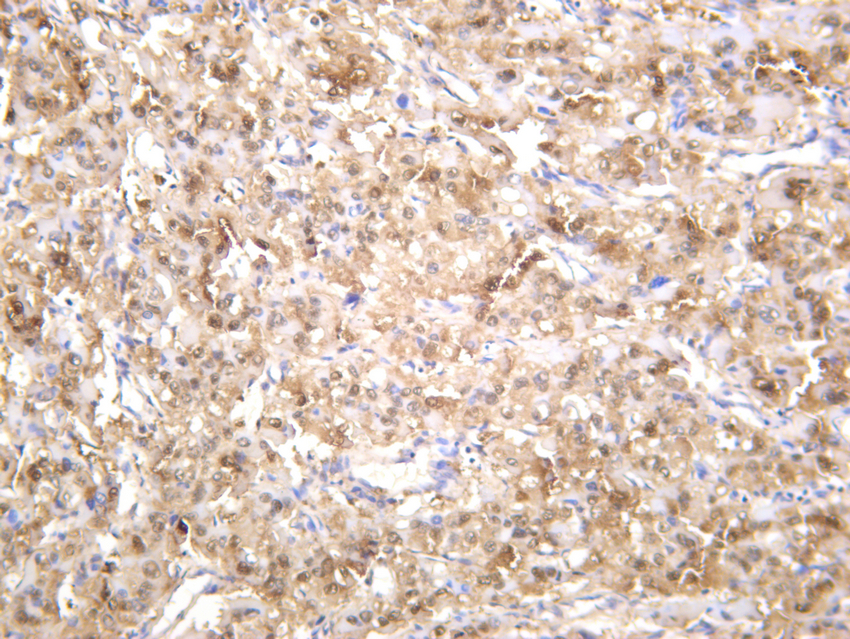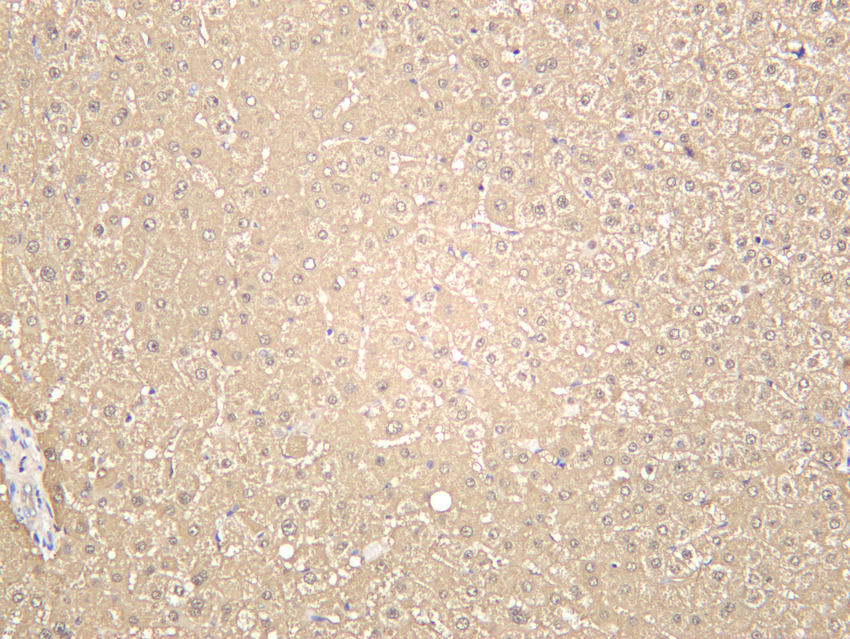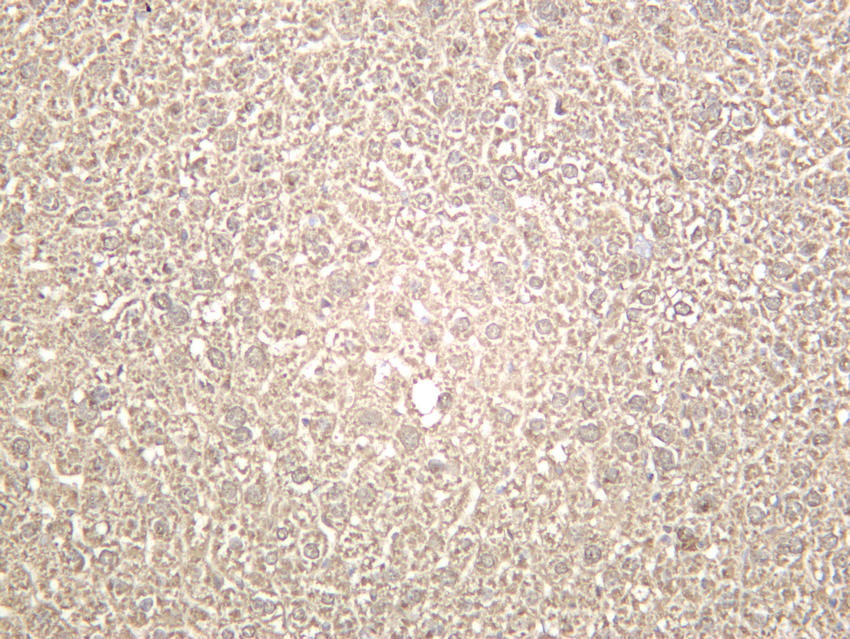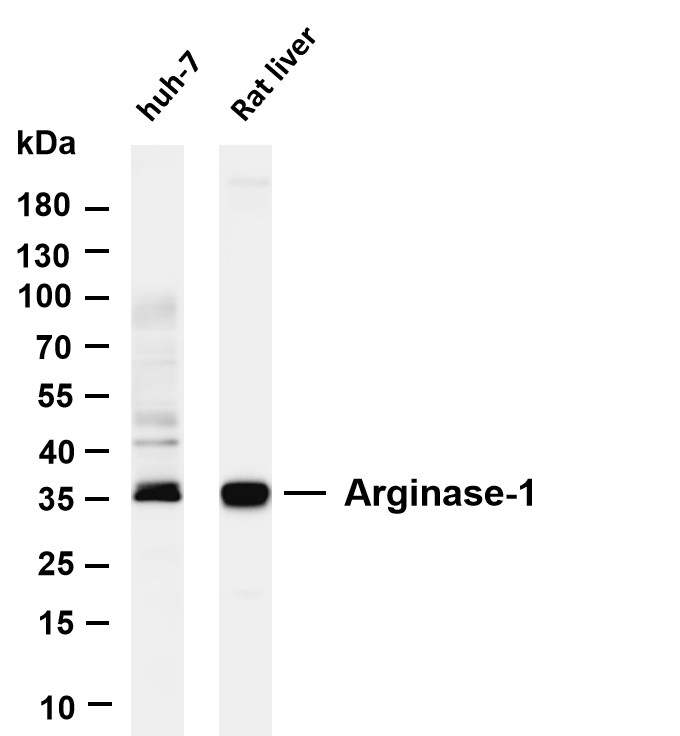Arginase-1 (PT0364R) PT® Rabbit mAb
- Catalog No.:YM8217
- Applications:WB;IHC;IF;IP;ELISA
- Reactivity:Human; Mouse; Rat;
- Target:
- Arginase I
- Fields:
- >>Arginine biosynthesis;>>Arginine and proline metabolism;>>Metabolic pathways;>>Biosynthesis of amino acids;>>Amoebiasis
- Gene Name:
- ARG1
- Protein Name:
- Arginase-1 (EC 3.5.3.1) (Liver-type arginase) (Type I arginase)
- Human Gene Id:
- 383
- Human Swiss Prot No:
- P05089
- Specificity:
- endogenous
- Formulation:
- PBS, 50% glycerol, 0.05% Proclin 300, 0.05%BSA
- Source:
- Monoclonal, rabbit, IgG, Kappa
- Dilution:
- IHC 1:200-1:1000;WB 1:2000-1:10000;IF 1:200-1:1000;ELISA 1:5000-1:20000;IP 1:50-1:200;
- Purification:
- Protein A
- Storage Stability:
- -15°C to -25°C/1 year(Do not lower than -25°C)
- Molecular Weight(Da):
- 35kD
- Observed Band(KD):
- 35kD
- Background:
- Arginase catalyzes the hydrolysis of arginine to ornithine and urea. At least two isoforms of mammalian arginase exist (types I and II) which differ in their tissue distribution, subcellular localization, immunologic crossreactivity and physiologic function. The type I isoform encoded by this gene, is a cytosolic enzyme and expressed predominantly in the liver as a component of the urea cycle. Inherited deficiency of this enzyme results in argininemia, an autosomal recessive disorder characterized by hyperammonemia. Two transcript variants encoding different isoforms have been found for this gene. [provided by RefSeq, Sep 2011],
- Function:
- catalytic activity:L-arginine + H(2)O = L-ornithine + urea.,cofactor:Binds 2 manganese ions per subunit.,disease:Defects in ARG1 are the cause of argininemia (ARGIN) [MIM:207800]; also known as hyperargininemia. Argininemia is a rare autosomal recessive disorder of the urea cycle. Arginine is elevated in the blood and cerebrospinal fluid, and periodic hyperammonemia occurs. Clinical manifestations include developmental delay, seizures, mental retardation, hypotonia, ataxia, progressive spastic quadriplegia.,induction:By arginine or homoarginine.,online information:Arginase entry,pathway:Nitrogen metabolism; urea cycle; L-ornithine and urea from L-arginine: step 1/1.,similarity:Belongs to the arginase family.,subunit:Homotrimer.,
- Subcellular Location:
- Cytoplasm
- Expression:
- Within the immune system initially reported to be selectively expressed in granulocytes (polymorphonuclear leukocytes [PMNs]) (PubMed:15546957). Also detected in macrophages mycobacterial granulomas (PubMed:23749634). Expressed in group2 innate lymphoid cells (ILC2s) during lung disease (PubMed:27043409).
Mannosylated polydopamine nanoparticles alleviate radiation- induced pulmonary fibrosis by targeting M2 macrophages and inhibiting the TGF-β1/Smad3 signaling pathway. Yuhui Hao WB Mouse lung tissue
IRG1 restrains M2 macrophage polarization and suppresses intrahepatic cholangiocarcinoma progression via the CCL18/STAT3 pathway CANCER SCIENCE Menghua Zhou WB Human 1:1000 THP-1 cell
The macrophage polarization in allergic responses induced by tropomyosin of Macrobrachium nipponense in cell and murine models INTERNATIONAL IMMUNOPHARMACOLOGY Yanhai Xie WB Mouse 1:1000 jejunum tissue peritoneal cell
- June 19-2018
- WESTERN IMMUNOBLOTTING PROTOCOL
- June 19-2018
- IMMUNOHISTOCHEMISTRY-PARAFFIN PROTOCOL
- June 19-2018
- IMMUNOFLUORESCENCE PROTOCOL
- September 08-2020
- FLOW-CYTOMEYRT-PROTOCOL
- May 20-2022
- Cell-Based ELISA│解您多样本WB检测之困扰
- July 13-2018
- CELL-BASED-ELISA-PROTOCOL-FOR-ACETYL-PROTEIN
- July 13-2018
- CELL-BASED-ELISA-PROTOCOL-FOR-PHOSPHO-PROTEIN
- July 13-2018
- Antibody-FAQs
- Products Images

- Human hepatocellular carcinoma was stained with anti-Arginase-1 (PT0364R) rabbit antibody

- Human liver was stained with anti-Arginase-1 (PT0364R) rabbit antibody

- Mouse liver was stained with anti-Arginase-1 (PT0364R) rabbit antibody

- Rat liver was stained with anti-Arginase-1 (PT0364R) rabbit antibody

- Various whole cell lysates were separated by 4-20% SDS-PAGE, and the membrane was blotted with anti-Arginase-1 (PT0364R) antibody. The HRP-conjugated Goat anti-Rabbit IgG(H + L) antibody was used to detect the antibody. Lane 1: huh-7 Lane 2: Rat liver Predicted band size: 35kDa Observed band size: 35kDa



